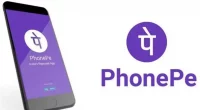Beginning 1st July 2022, the fund houses can launch Passive Equity Linked Savings Scheme in the open-ended scheme category. The passively managed schemes are linked to the performance of specific indices, unlike actively managed schemes that are managed by the fund managers. The Circular issued by the market regulator states that the passive ELSS scheme shall mimic one of the indices comprising equity shares of the top 250 companies (market capitalisation). These passive ELSS funds will offer another option to the investors for tax savings. However, the fund houses can launch either active ELSS schemes or passive ELSS schemes, but not both.
Norms from Debt Exchange Traded Funds (ETFs)/ Index Funds
The Circular specifies that the Passive Debt Funds portfolio can comprise of following indices:
- Corporate debt indices- Corporate Debt Securities,
- G-sec indices- Government Securities, t-bills or State Development Loans (SDLs), or
- Hybrid debt indices- A combination of Corporate Debt Securities and G-sec/t-bills/SDLs.
The SEBI has provided detailed provisions for each of the above passive debt fund categories, including specification of investment limits for a single issuer(rating based), group, and sector.
Norms for market-making framework for ETF
To provide continuous liquidity on the stock exchange, AMCs shall appoint at least two market makers (members of the stock exchange). For any incentives to be given to the market makers, they should be charged to the scheme within the defined limits of Total Expense Ratios (TERs).
SEBI wants mutual funds to have a transparent incentive structure for market makers, and there should be a proper audit trail for scheme-wise incentives.
Direct execution of ETF transactions through AMC
Like buying ETF units on the stock exchange, you can also buy units directly from the AMC. However, you cannot buy 1 or 2 units directly from the AMC. You can only create and redeem units in the creation size defined by the AMC. The Circular has defined a threshold above which the investors can do direct transactions with AMCs. The said threshold limit for redemption or subscription with the AMC is set at Rs 25 Crore. The threshold limit will not apply to Market Makers (MMs).
Tracking error and tracking difference
The Circular also specifies disclosing ‘tracking errors’ and ‘tracking difference’ in the AMCs websites. It also specifies the limits for tracking errors and tracking difference that needs to be maintained by the ETF/Index Funds. These parameters help the investors know how the passive fund is performing compared to its underlying index’s performance.
Disclosure of Indicative Net Asset Value (iNAV)
Where the NAV informs investors about the value per share of an ETF at the end of each trading day, the iNAV provides a more frequent snapshot so that the investors can get a “real-time” measure of an ETF during the trading hours. As per the Circular, the iNAV of the Equity ETFs should be disclosed within a lag of 15 seconds from the underlying market, whereas debt ETFs should be disclosed at least four times a day.
It will help the investors to make more informed decisions while investing in ETFs.
For any clarifications/feedback on the topic, please contact the writer at namita.shah@cleartax.in

I’m a chartered accountant and a functional CA writer by profession. Reading and travelling in free time enhances my creativity in work. I enjoy exploring my creative side, and so I keep myself engaged in learning new skills.





